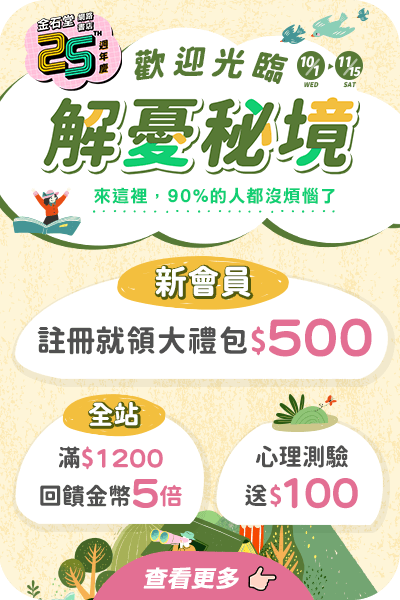Learning to Rank for Information Retrieval and Natural Language Processing, Second Edition
Learning to Rank for Information Retrieval and Natural Language Proces
內容簡介
Learning to rank refers to machine learning techniques for training a model in a ranking task. Learning to rank is useful for many applications in information retrieval, natural language processing, and data mining. Intensive studies have been conducted on its problems recently, and significant progress has been made. This lecture gives an introduction to the area including the fundamental problems, major approaches, theories, applications, and future work. The author begins by showing that various ranking problems in information retrieval and natural language processing can be formalized as two basic ranking tasks, namely ranking creation (or simply ranking) and ranking aggregation. In ranking creation, given a request, one wants to generate a ranking list of offerings based on the features derived from the request and the offerings. In ranking aggregation, given a request, as well as a number of ranking lists of offerings, one wants to generate a new ranking list of the offerings. Ranking creation (or ranking) is the major problem in learning to rank. It is usually formalized as a supervised learning task. The author gives detailed explanations on learning for ranking creation and ranking aggregation, including training and testing, evaluation, feature creation, and major approaches. Many methods have been proposed for ranking creation. The methods can be categorized as the pointwise, pairwise, and listwise approaches according to the loss functions they employ. They can also be categorized according to the techniques they employ, such as the SVM based, Boosting based, and Neural Network based approaches. The author also introduces some popular learning to rank methods in details. These include: PRank, OC SVM, McRank, Ranking SVM, IR SVM, GBRank, RankNet, ListNet & ListMLE, AdaRank, SVM MAP, SoftRank, LambdaRank, LambdaMART, Borda Count, Markov Chain, and CRanking. The author explains several example applications of learning to rank including web search, collaborative filtering, definition search, keyphrase extraction, query dependent summarization, and re-ranking in machine translation. A formulation of learning for ranking creation is given in the statistical learning framework. Ongoing and future research directions for learning to rank are also discussed. Table of Contents: Learning to Rank / Learning for Ranking Creation / Learning for Ranking Aggregation / Methods of Learning to Rank / Applications of Learning to Rank / Theory of Learning to Rank / Ongoing and Future Work
配送方式
-
台灣
- 國內宅配:本島、離島
-
到店取貨:
不限金額免運費



訂購/退換貨須知
加入金石堂 LINE 官方帳號『完成綁定』,隨時掌握出貨動態:
商品運送說明:
- 本公司所提供的產品配送區域範圍目前僅限台灣本島。注意!收件地址請勿為郵政信箱。
- 商品將由廠商透過貨運或是郵局寄送。消費者訂購之商品若無法送達,經電話或 E-mail無法聯繫逾三天者,本公司將取消該筆訂單,並且全額退款。
- 當廠商出貨後,您會收到E-mail出貨通知,您也可透過【訂單查詢】確認出貨情況。
- 產品顏色可能會因網頁呈現與拍攝關係產生色差,圖片僅供參考,商品依實際供貨樣式為準。
- 如果是大型商品(如:傢俱、床墊、家電、運動器材等)及需安裝商品,請依商品頁面說明為主。訂單完成收款確認後,出貨廠商將會和您聯繫確認相關配送等細節。
- 偏遠地區、樓層費及其它加價費用,皆由廠商於約定配送時一併告知,廠商將保留出貨與否的權利。
提醒您!!
金石堂及銀行均不會請您操作ATM! 如接獲電話要求您前往ATM提款機,請不要聽從指示,以免受騙上當!
退換貨須知:
**提醒您,鑑賞期不等於試用期,退回商品須為全新狀態**
-
依據「消費者保護法」第19條及行政院消費者保護處公告之「通訊交易解除權合理例外情事適用準則」,以下商品購買後,除商品本身有瑕疵外,將不提供7天的猶豫期:
- 易於腐敗、保存期限較短或解約時即將逾期。(如:生鮮食品)
- 依消費者要求所為之客製化給付。(客製化商品)
- 報紙、期刊或雜誌。(含MOOK、外文雜誌)
- 經消費者拆封之影音商品或電腦軟體。
- 非以有形媒介提供之數位內容或一經提供即為完成之線上服務,經消費者事先同意始提供。(如:電子書、電子雜誌、下載版軟體、虛擬商品…等)
- 已拆封之個人衛生用品。(如:內衣褲、刮鬍刀、除毛刀…等)
- 若非上列種類商品,均享有到貨7天的猶豫期(含例假日)。
- 辦理退換貨時,商品(組合商品恕無法接受單獨退貨)必須是您收到商品時的原始狀態(包含商品本體、配件、贈品、保證書、所有附隨資料文件及原廠內外包裝…等),請勿直接使用原廠包裝寄送,或於原廠包裝上黏貼紙張或書寫文字。
- 退回商品若無法回復原狀,將請您負擔回復原狀所需費用,嚴重時將影響您的退貨權益。











商品評價